Contents
- Most Common Body Parts in Korean
- 1. 머리 (meo-ri) — Head
- 2. 눈 (nun) — Eye
- 3. 코 (ko) — Nose
- 4. 귀 (gwi) — Ear
- 5. 입 (ip) — Mouth
- 6. 목 (mok) — Neck
- 7. 어깨 (eo-kkae) — Shoulder
- 8. 팔 (pal) — Arm
- 9. 가슴 (ga-seum) — Chest
- 10. 등 (deung) — Back
- 11. 옆구리 (yeop-gu-ri) — Side
- 12. 배 (bae) — Stomach
- 13. 허리 (heo-ri) — Waist
- 14. 엉덩이 (eong-deong-i) — Buttocks
- 15. 다리 (da-ri) — Leg
- 16. 허벅지 (heo-beok-ji) — Thigh
- 17. 무릎 (mu-reup) — Knee
- 18. 발 (bal) — Foot
- 19. 피부 (pi-bu) — Skin
- 20. 뼈 (ppyeo) — Bone
- Other Body-related Korean Vocabulary
- Using Korean Body Parts Vocabulary in the Real World
- Korean Body Parts Vocabulary Quiz
- And One More Thing...
Body Parts in Korean [Lesson and Quiz]

Want to learn to talk about bodies and body parts in Korean?
We’ve included fun facts, mnemonic devices and Korean cultural tidbits to help you learn and memorize 60 of the most common Korean words for parts of the body.
Plus, we’ll look at some of the ways you can make use of this vocabulary in everyday life.
Download: This blog post is available as a convenient and portable PDF that you can take anywhere. Click here to get a copy. (Download)
Most Common Body Parts in Korean
1. 머리 (meo-ri) — Head

Okay, let’s start from the top with the head or 머리 (meo-ri).
It contains the face or 얼굴 (eol-gul), with all the other parts we’re going to talk about, like the eyes, ears and nose.
Interestingly, 머리 (“meo-ri”) can also refer to hair. Koreans refer to both head and hair as 머리 (meo-ri) and you need to listen for context to get what’s actually meant. But if you just want a different word for hair, you can say 머리카락 (meo-ri-ka-rak).
2. 눈 (nun) — Eye
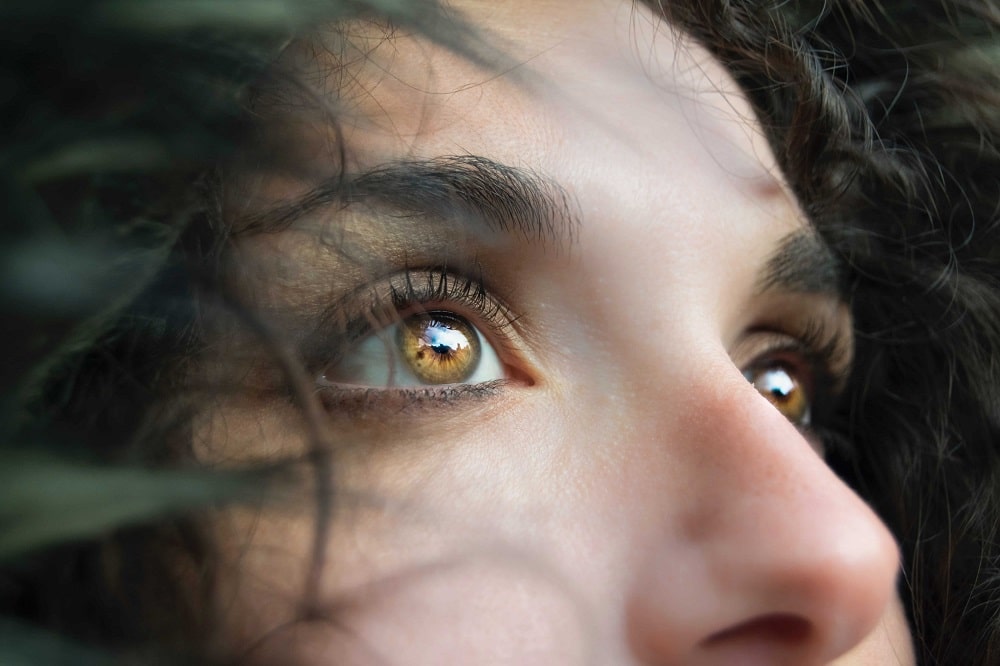
Plastic surgery is very common and socially accepted in South Korea. One of the most common procedures is known as “blepharoplasty” or double eyelid surgery which makes the 눈 (nun) look bigger. A number of K-pop stars are known to have undergone the procedure.
3. 코 (ko) — Nose

It’s not official nor very scientific, but drama fans and plastic surgeons alike have picked (pun intended) Song Hye Kyo as having the most perfect Korean nose. She’s that talented actress who played the doctor in the drama “Descendants of the Sun.” She also played roles in movies like “A Reason To Live” and “The Queens.”
4. 귀 (gwi) — Ear
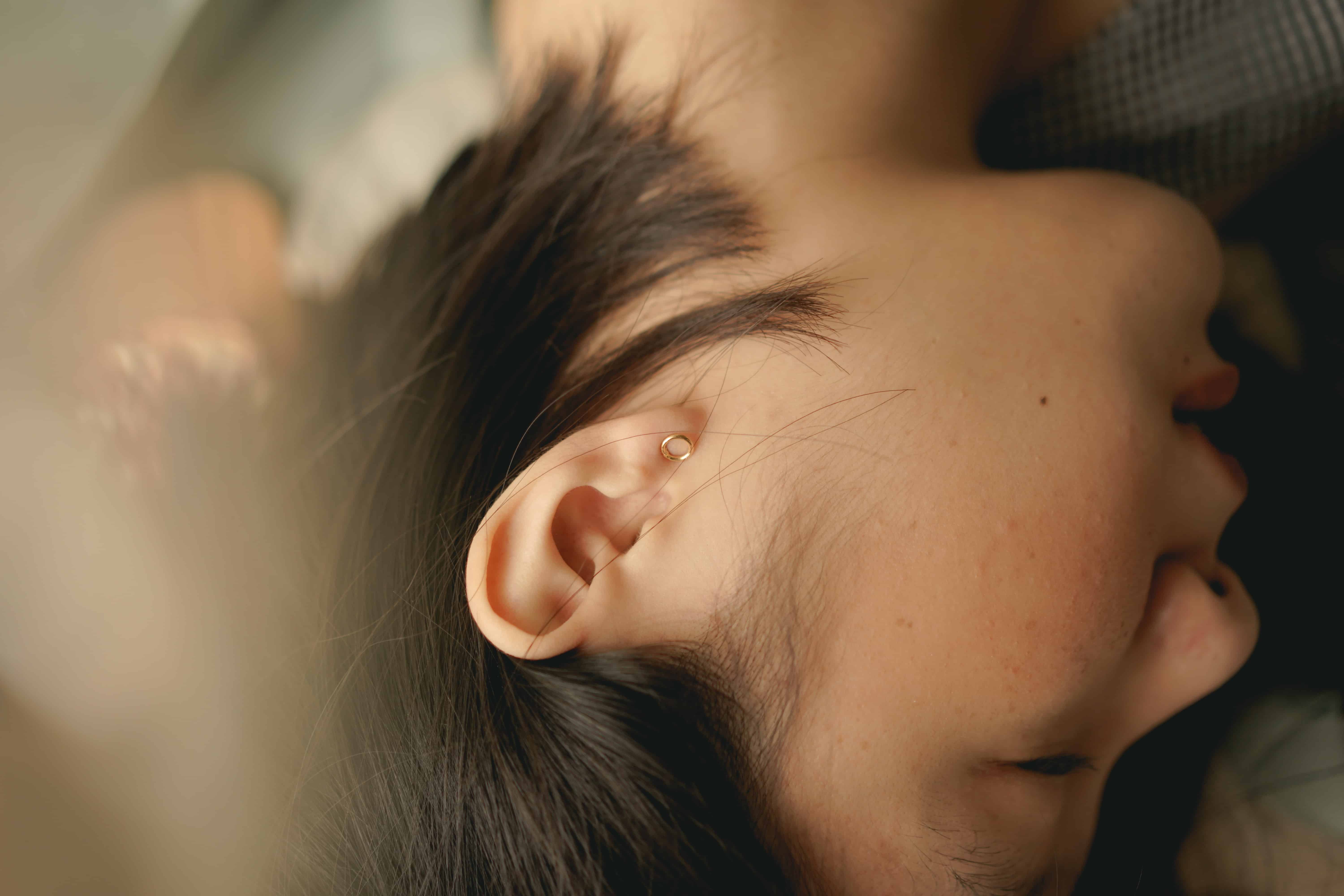
Next we go to your ears, which is 귀 (gwi) in Korean.
Have you heard (again, pun intended) about this new wellness trend called ear seeding? It’s acupuncture for the 귀 (gwi). The idea is that different areas of our ears correspond to different areas of the body. By using tiny “seeds” to stimulate different pressure points in the ears, you’re doing good to those parts of the body.
Korean celebrities have taken to “ear seeding” and there are shops in the most exclusive corners of Seoul that specialize in this kind of service.
5. 입 (ip) — Mouth
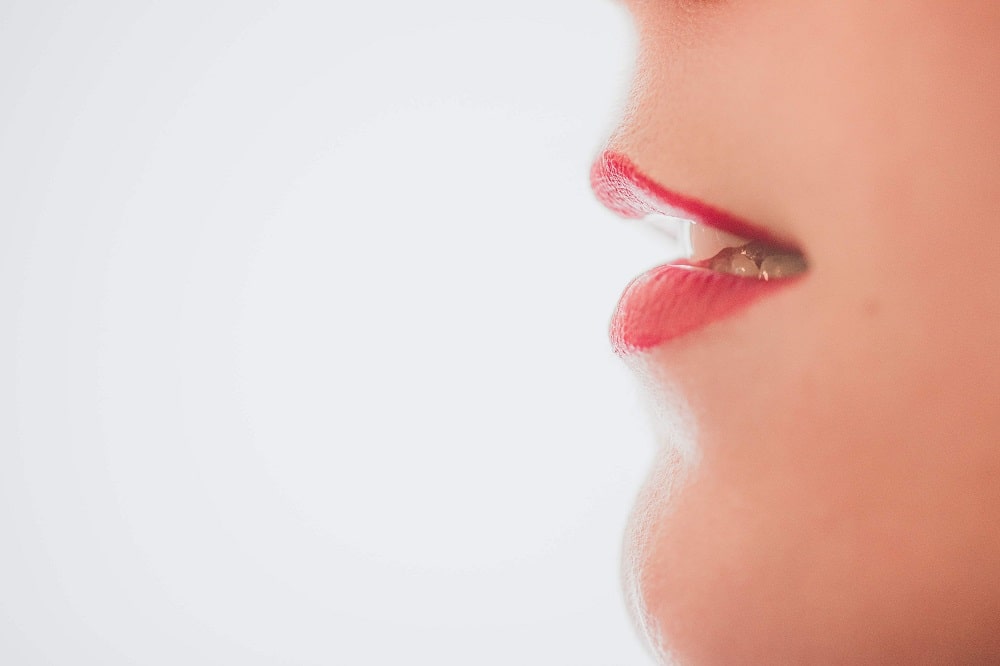
Outside your 입 (ip), you have your lips or your 입술 (ip-sul). Inside you have the tongue and teeth which are 혀 (hyeo) and 이 (ee) respectively in Korean.
While we’re on the topic, in order to properly pronounce words in Korean, you have to put more focus on the front half of your tongue. With English, you use all the different parts of the tongue—from the tip, to the middle and the back—to produce sounds. But in Korean, the tongue moves relatively little. And when it does, most sounds are focused on the front part of the tongue. Just a tip! (Yes, that’s another pun.)
6. 목 (mok) — Neck

목 (mok) or the neck holds up everything that we’ve talked about so far, connecting it to the rest of the body.
7. 어깨 (eo-kkae) — Shoulder
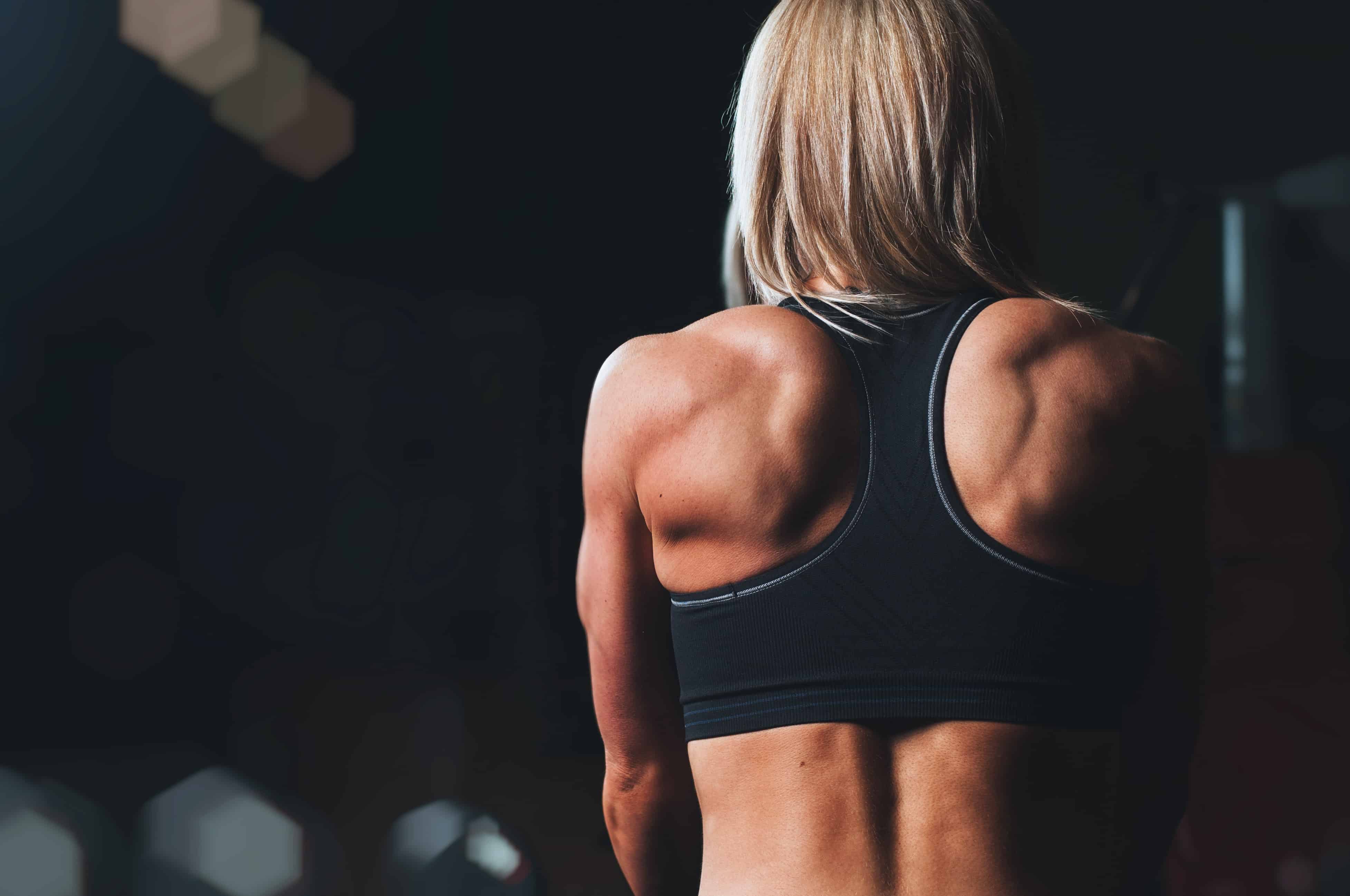
Somebody giving you the “cold shoulder?” Maybe it’s your dad who didn’t receive a card on his birthday or a friend who you forgot to text last weekend.
8. 팔 (pal) — Arm

You hug, you high five, you pat on the back. All these things you do with your arms, and all these things you do to a friend…a “pal.” And 팔 (pal) is the Korean word for “arm.”
9. 가슴 (ga-seum) — Chest
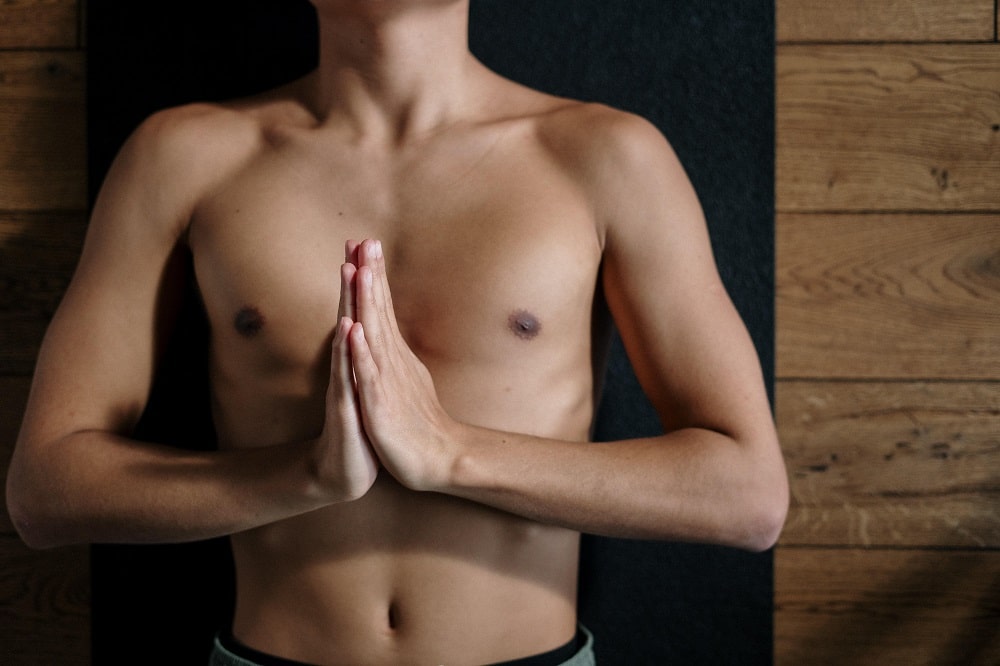
Native speakers use 가슴 (ga-seum) to mean chest, breast or heart.
If you want to refer specifically to breasts, as in mammalian source of nourishment, you can say 유방 (yu-bang).
10. 등 (deung) — Back

Let’s not focus too much on the front, there’s a huge canvas that’ll show itself if you just do a 180° turn. It’s your 등 (deung) or back.
11. 옆구리 (yeop-gu-ri) — Side

What’s between the front and the back? The side of the torso, of course.
12. 배 (bae) — Stomach
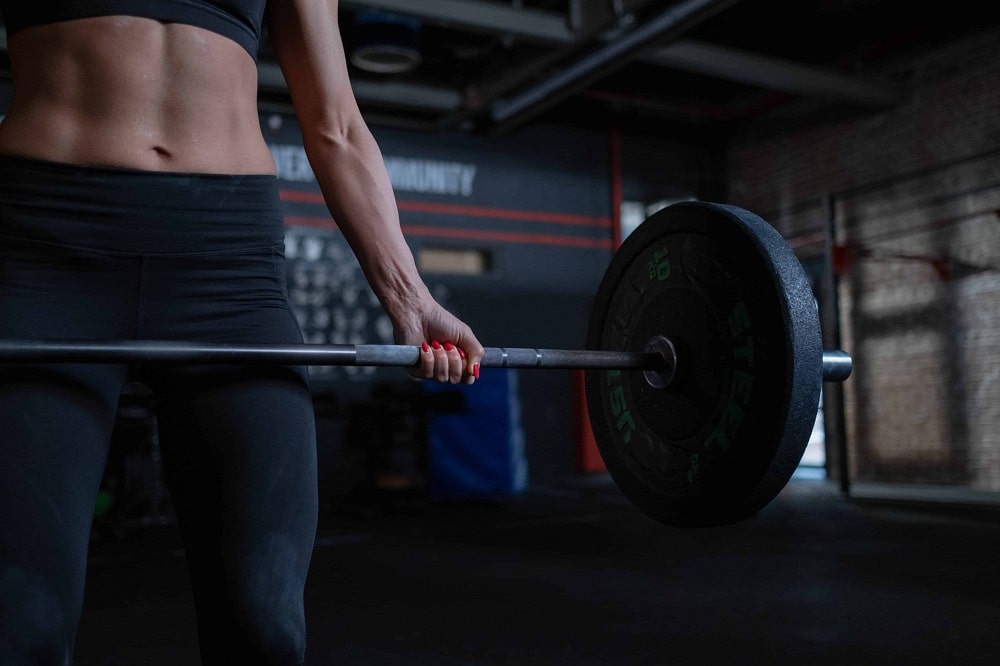
It can be flat, full, round or paunchy. These are words that can describe your stomach, belly or tummy. And the Korean word for it is 배 (bae).
13. 허리 (heo-ri) — Waist
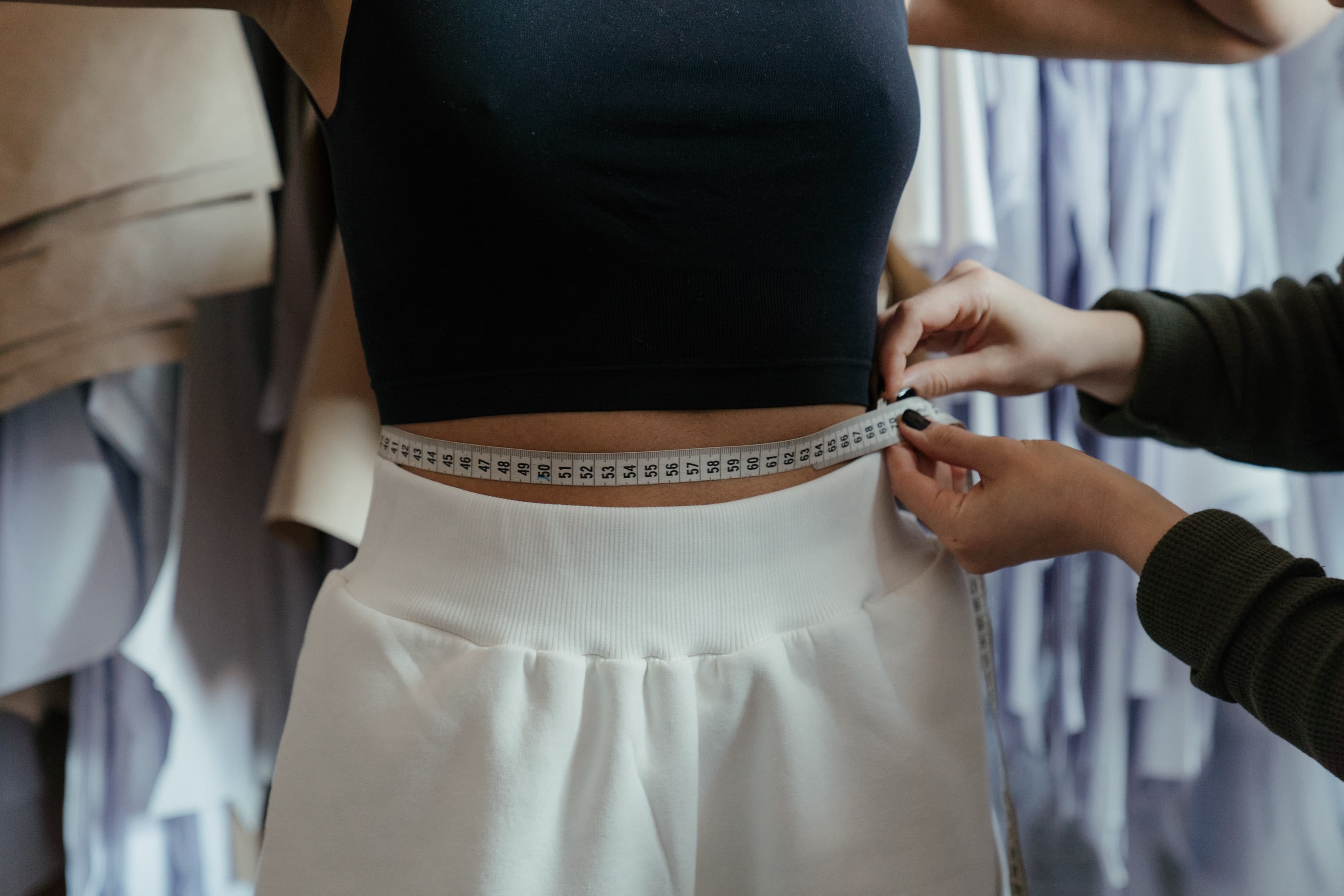
Kpop idol Mina of AOA is reputed to have one of the smallest waists in the industry. Coming in at 17.9 inches, her 허리 (heo-ri) is the perfect example of the Korean expression 개미 허리 (Gae-mi heo-ri) or “ant waist.”
14. 엉덩이 (eong-deong-i) — Buttocks

Call it buttocks, bum, backside or behind, but whatever name you give it, 엉덩이 (eong-deong-i) are appreciated and prized for their posterior beauty. Many celebrities consider it their main claim to fame. People has even reported that along with other parts of the body, buttocks are insured by celebrities. J. Lo is reported to have insured hers for a sum of $27 million dollars.
15. 다리 (da-ri) — Leg

Legs or 다리 (da-ri) form the lower section of the human anatomy. Our legs take us places, allowing us to walk, march, stride, amble, jump, skip or hop from one place to another.
16. 허벅지 (heo-beok-ji) — Thigh
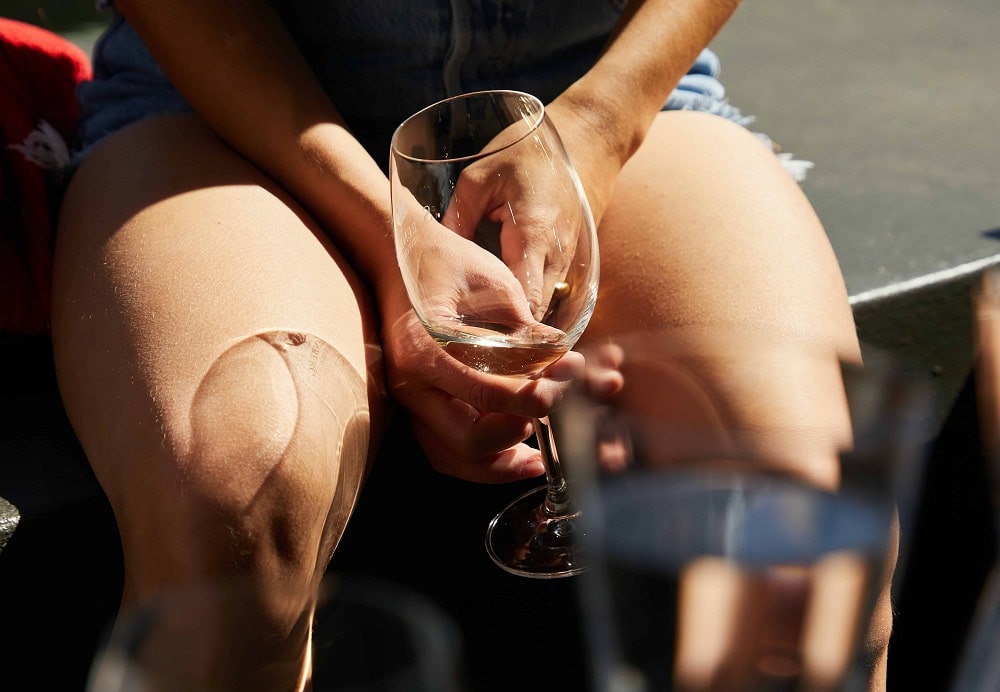
You can find the 허벅지 (heo-beok-ji) on the upper part of the legs.
All this talk of “legs,” “thighs,” and “breasts” has me thinking of fried chicken. In fact, the words for the human body parts are the very same words you’d find on a Korean chimaek menu. “Chimaek,” 치맥, is a combo of the Korean words for chicken, 치킨 (chi-kin), and beer, 맥주 (maek-ju).
To say that Korea is obsessed with chicken is a huge understatement. It’s probably the country with the densest concentration of chimaek joints in the world. Chicken restaurants exploded after the Korea-Japan 2002 World Cup, when Korean spectators, watching the large public screenings, would eat chicken and chug beer while cheering their team to victory.
So, now you have another great reason to brush up on Korean body parts—ordering some of that delicious chicken in Korean.
17. 무릎 (mu-reup) — Knee
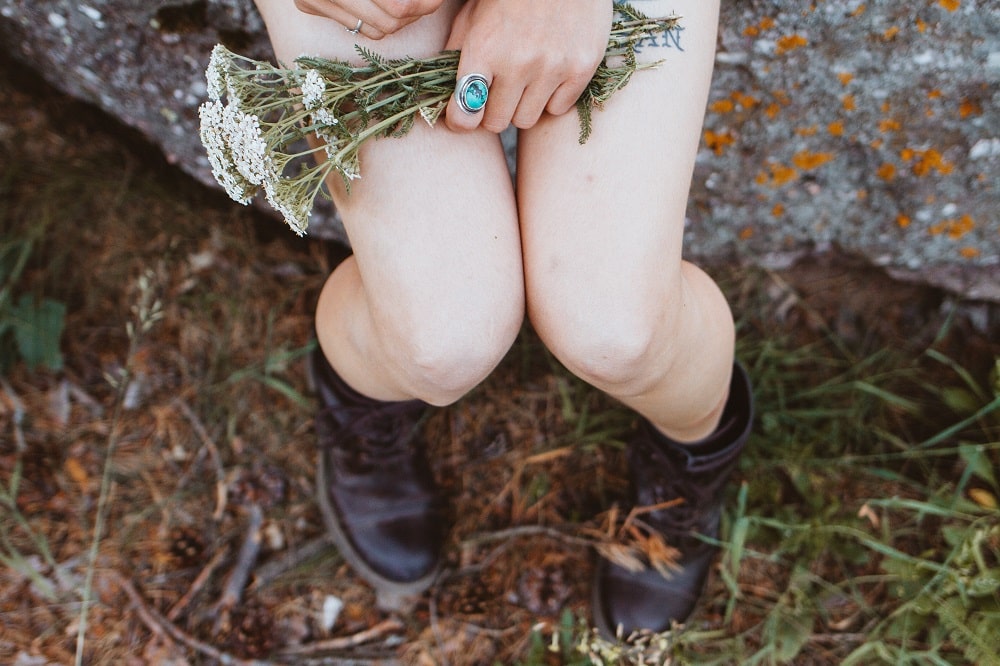
무릎 (mu-reup) can be found in the middle of the leg.
Kneeling is a traditional part of Korean culture. For example, on New Year’s Day, sons and daughters ceremonially kneel and bow in front of their parents to wish them prosperity and health. Kneeling and bowing is a sign of humility and respect. For serious offenses, or to show deep contrition for a mistake, one can kneel and bow and ask for forgiveness.
18. 발 (bal) — Foot
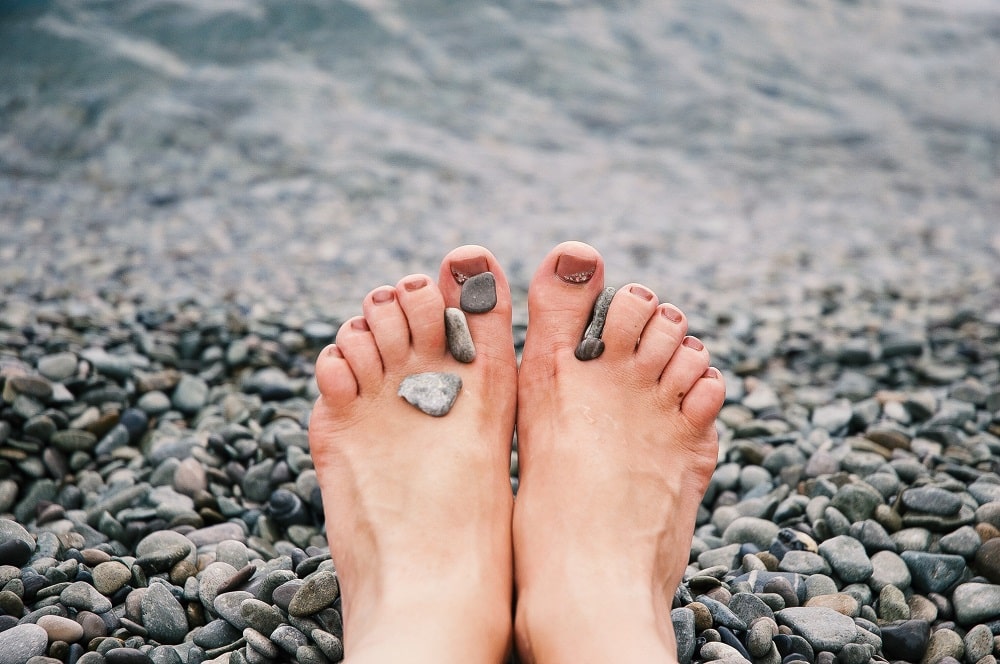
To help you remember 발 (bal), you need to remember that your foot helps to balance. Your foot is also what you use to do ballet. Without it, you wouldn’t be able to run and play basketball or any sport.
19. 피부 (pi-bu) — Skin
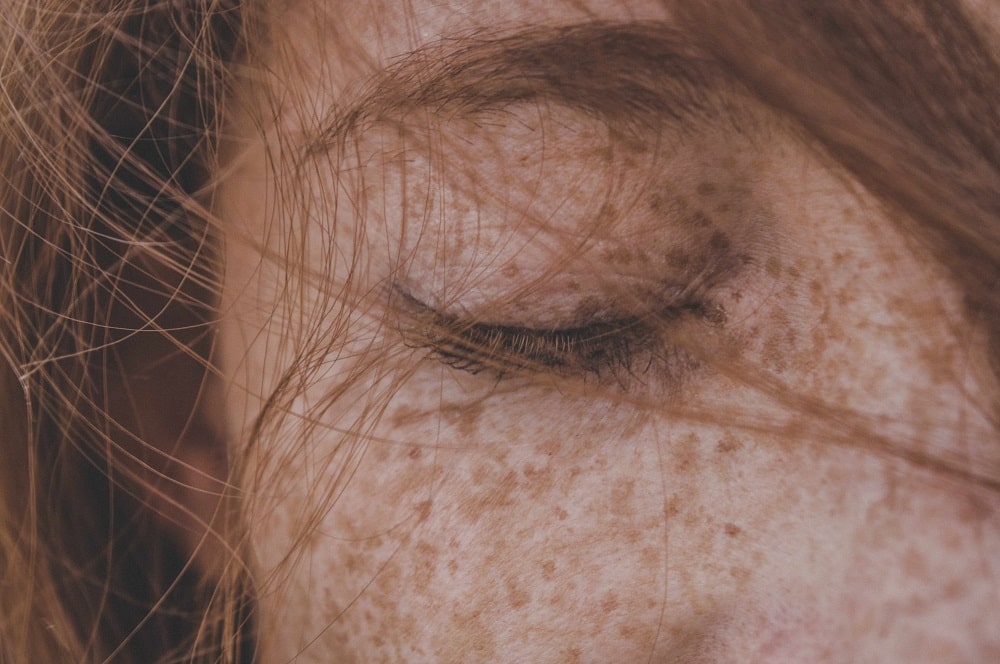
Korean 피부 (pi-bu) is renowned the world over. Koreans have been famous for having smooth, bright, flawless, almost pore-free skin. People have been asking, “How do you get Korean skin?” (The answer: Have Korean parents.)
The Korean cosmetics industry, nonetheless, has tried to share its secret with the world, and so we have wave after wave of Korean beauty products and skincare regimens and routines guaranteed to give one that K-pop sheen.
20. 뼈 (ppyeo) — Bone
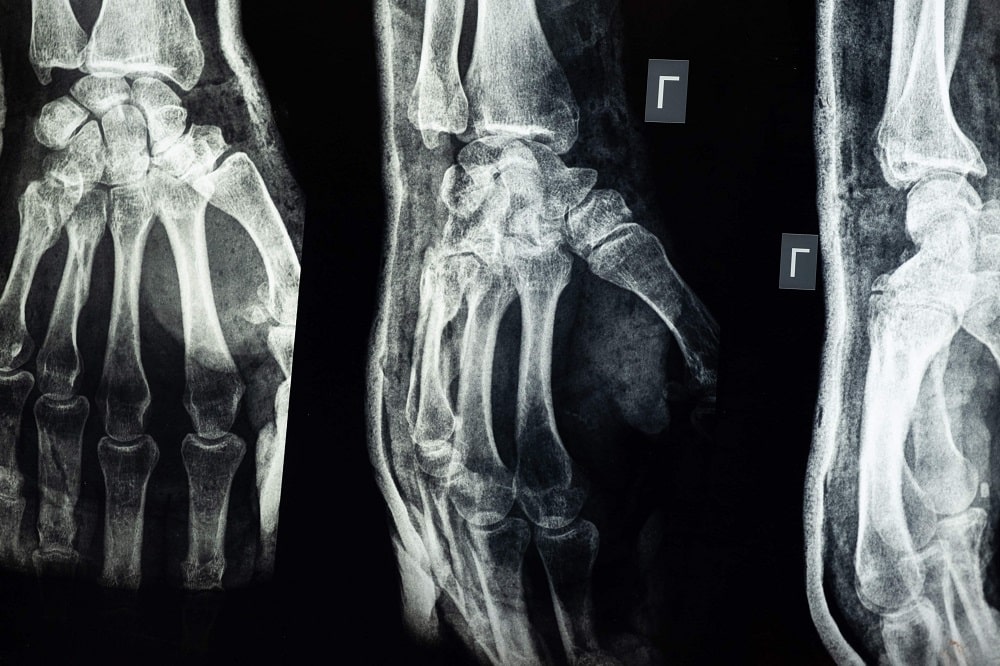
Many of the parts we’ve talked about will turn to mush without the 뼈 (ppyeo) or bone.
Other Body-related Korean Vocabulary
Beyond the main 20 body parts in Korean you just learned, sometimes you’ll have to be a little more specific (and also more general, like knowing the word for “body”). Check out this list for even more useful body-related vocabulary:
| English | Korean | Romanization |
|---|---|---|
| Body | 몸 | Mom |
| Hands | 손 | Son |
| Hips | 엉덩이 | Eong-deong-i |
| Hair | 머리카락 | Meori-karak |
| Eyebrows | 눈썹 | Nuns-seop |
| Fingers | 손가락 | Son-garak |
| Wrists | 손목 | Son-mok |
| Palms | 손바닥 | Son-badak |
| Back of the Hand | 손등 | Son-deung |
| Fingernails | 손톱 | Son-top |
| Wrist | 손목 | Son-mok |
| Fingernails | 손가락톱 | Son-garak-top |
| Toes | 발가락 | Bal-garak |
| Ankles | 발목 | Bal-mok |
| Soles | 발바닥 | Bal-badak |
| Top of the Foot | 발등 | Bal-deung |
| Nails (on toes) | 발톱 | Bal-top |
| Heels | 무릎뒤꿈치 | Mureup-dwik-kum-chi |
| Heel (of the foot) | 무릎꿈치 | Mureup-kkum-chi |
| Face | 얼굴 | Eol-gul |
| Cheeks | 뺨 | Ppeom |
| Chin | 턱 | Teok |
| Lips | 입술 | Ip-sul |
| Tongue | 혀 | Hyeo |
| Teeth | 이 | I |
| Muscles | 근육 | Geun-yuk |
| Heart | 심장 | Sim-jang |
| Liver | 간 | Gan |
| Kidneys | 신장 | Sin-jang |
| Stomach (organ) | 위 | Wi |
| Intestines | 장 | Jang |
| Blood | 피 | Pi |
| Brain | 뇌 | Noe |
| Skull | 두개골 | Du-gae-gol |
| Lungs | 폐 | Pyae |
| Veins | 정맥 | Jeong-maek |
Using Korean Body Parts Vocabulary in the Real World
Why bother learning Korean body part vocabulary, anyway?
Well, there are different situations where your knowledge of the human body can be put to good use. Here are a few:
Giving Compliments
While it’s not always necessary to focus on the physical when complimenting another, you can easily make a person’s day by pointing out their pretty eyes or gorgeous hair.
But instead of the generic 아름다우시네요 (A-reum-da-woo-si-neyo) which means “You are beautiful,” you can be more specific and say something like:
눈이 참 예뻐요 (Nun-i cham ye-ppeo-yo) — Your eyes are pretty.
머리가 아주 예뻐요 (Meo-li-ga a-ju ye-ppeo-yo) — Your hair is pretty.
To hear these words and phrases in context in genuine Korean authentic videos, consider looking them up on FluentU.
FluentU takes authentic videos—like music videos, movie trailers, news and inspiring talks—and turns them into personalized language learning lessons.
You can try FluentU for free for 2 weeks. Check out the website or download the iOS app or Android app.
P.S. Click here to take advantage of our current sale! (Expires at the end of this month.)
Search for any word to see what it means and in what videos the word comes up, then watch the videos and have fun as you’re learning.
Getting Help When You’re Hurt
Another occasion you can put this vocabulary to good use is when you want to point out which part of your body is in pain.
If you find yourself in an emergency situation and you get asked something like 어디가 아프세요? (Uh-di-ga ah-peu-se-yo?) meaning, “Where does it hurt?”, instead of just saying 여기 아파요 (Yuh-gi ah-pa-yo), “It hurts here,” and point to your malady, you can be more specific.
Like if your tummy hurts, you can say 배 아파요 (Bae ah-pa-yo). Or if your back hurts, you can say 허리 아파요 (Huh-ri ah-pa-yo) or 머리 아파요 (Muh-ri ah-pa-yo) if it’s your head.
Basically, you can just mention the body part and then add 아파요 (ah-pa-yo) to specify the source of your discomfort. Learn the words for the body parts in Korean so that you can help the people who want to help you.
Once you’ve received the help that you desired, don’t forget that Korean culture places heavy emphasis on etiquette and politeness. For that, you’ll need a lesson in saying “thank you,” as seen in the following video:
Using Korean Idioms with Body Parts
Lastly, you’ll find anatomically-themed idioms in Korean. English has expressions like “foot in my mouth,” “cost an arm and a leg,” “cold feet” and “a sight for sore eyes.” Well, Korean has a bunch of them too!
Here are a few examples to whet your appetite:
- 눈이 높다 (Nun-i nop-da) literally means “eyes are high.” This is the Korean idiom for somebody who’s picky or has high standards. You can say that your friend who’s never had a boyfriend is 눈이 높다. (But then again, maybe she just hasn’t met “that one special guy.”)
- 귀가 얇다 (Gwi-ga yal-da) literally means “thin ears.” It refers to a person who’s easily persuaded or influenced. If your friend believes (and shares) everything she reads on social media, you might say she’s easily persuaded and has 귀가 얇다.
- 손이 크다 (Son-i keu-da) literally means “hands are big.” Now this one has nothing to do with “big hands, means big feet, means…” nonsense. 손이 크다 is someone who’s overly generous and excessive. Let’s say you’re visiting an aunt for the weekend. If she prepares a lavish feast for you that could feed a whole village, that’s being 손이 크다.
Korean Body Parts Vocabulary Quiz
Now that you’ve mastered the body parts in Korean, so how well you do with this 20-question multiple-choice quiz:
And so we come to the end of this post. Now that you know how to refer to the different parts of the body, review the vocabulary you’ve learned and put these words to use every day.
Download: This blog post is available as a convenient and portable PDF that you can take anywhere. Click here to get a copy. (Download)
And One More Thing...
If you enjoyed this post, you're already halfway to having the time of your life learning Korean with FluentU!
FluentU makes it possible to learn with K-pop videos, funny commercials, entertaining web series and more. Just a quick look will give you an idea of the variety of FluentU videos on offer:

FluentU really takes the grunt work out of learning languages, leaving you with nothing but engaging, effective and efficient learning. It's already hand-picked the best videos for you (which are organized by level and topic), so all you have to do is simply choose any video that strikes your fancy to get started.
Each word in the interactive captions comes with a definition, audio, image, example sentences and more.
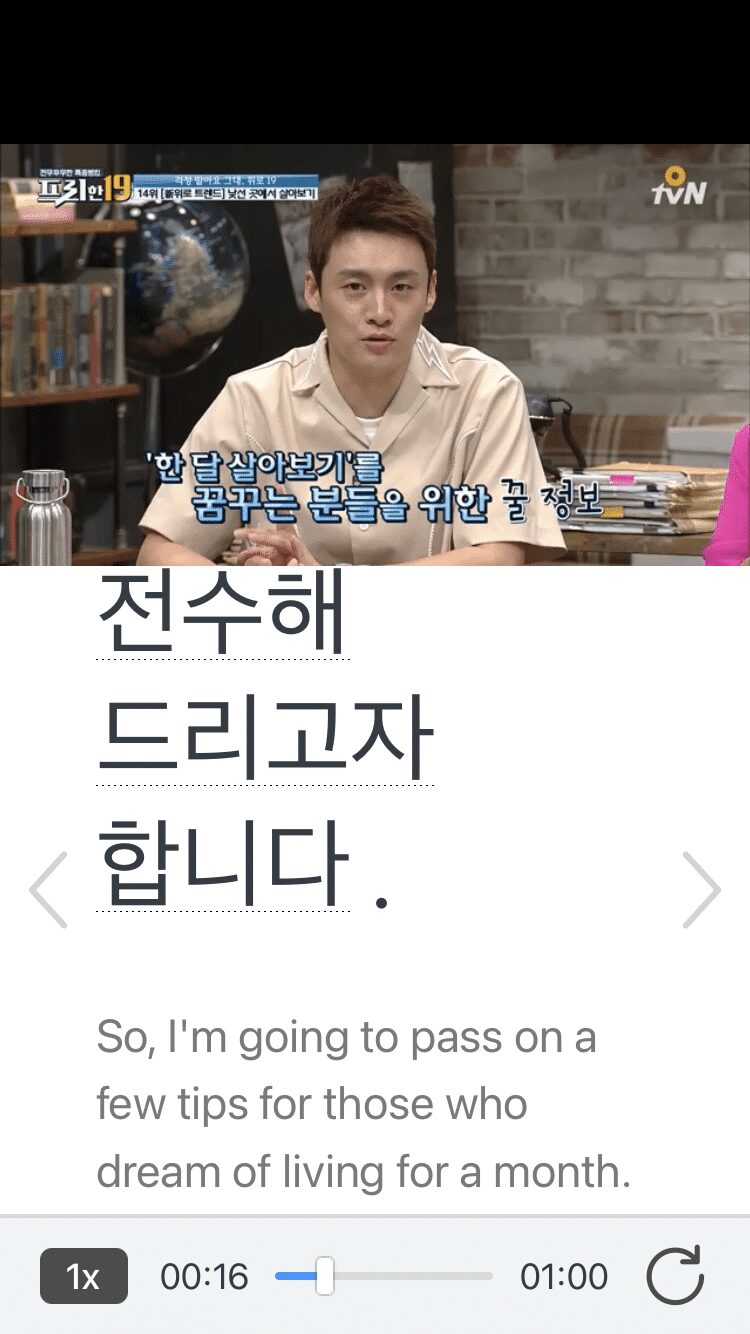
Access a complete interactive transcript of every video under the Dialogue tab, and easily review words and phrases from the video under Vocab.
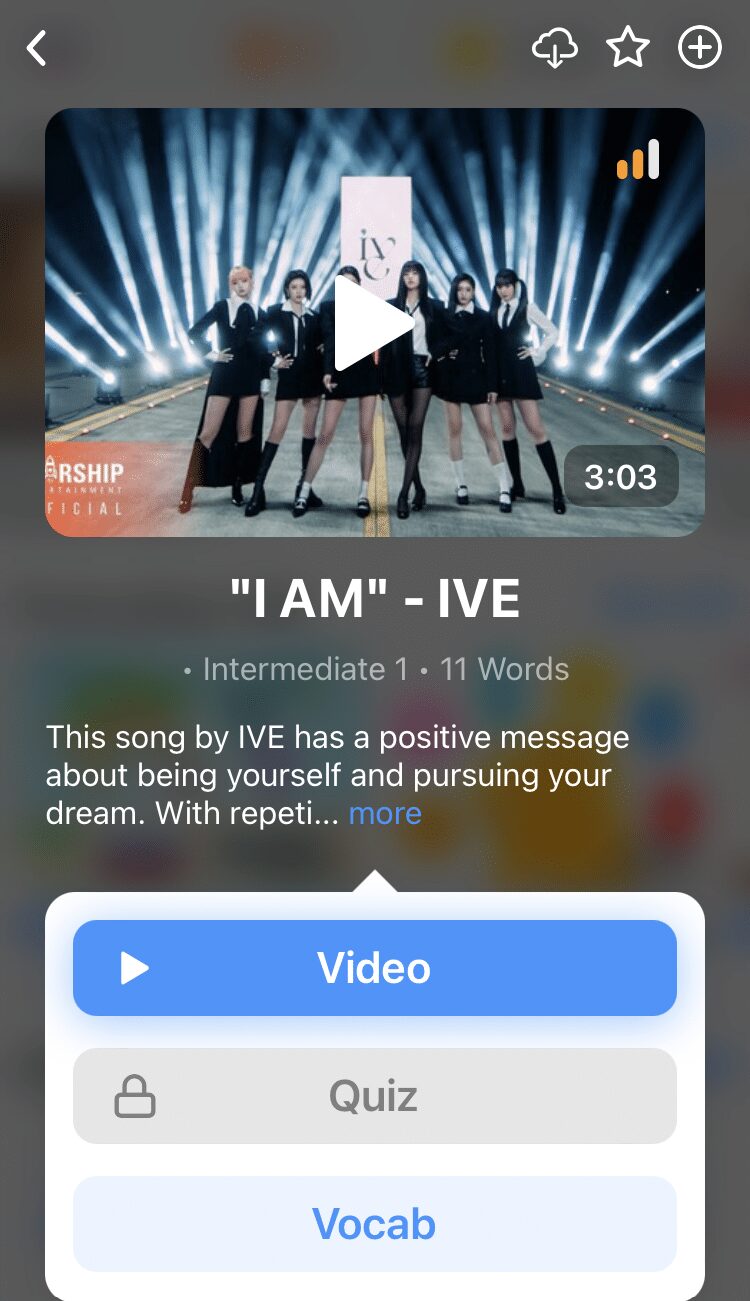
You can use FluentU’s unique Quiz Mode to learn the vocabulary and phrases from the video through fun questions.
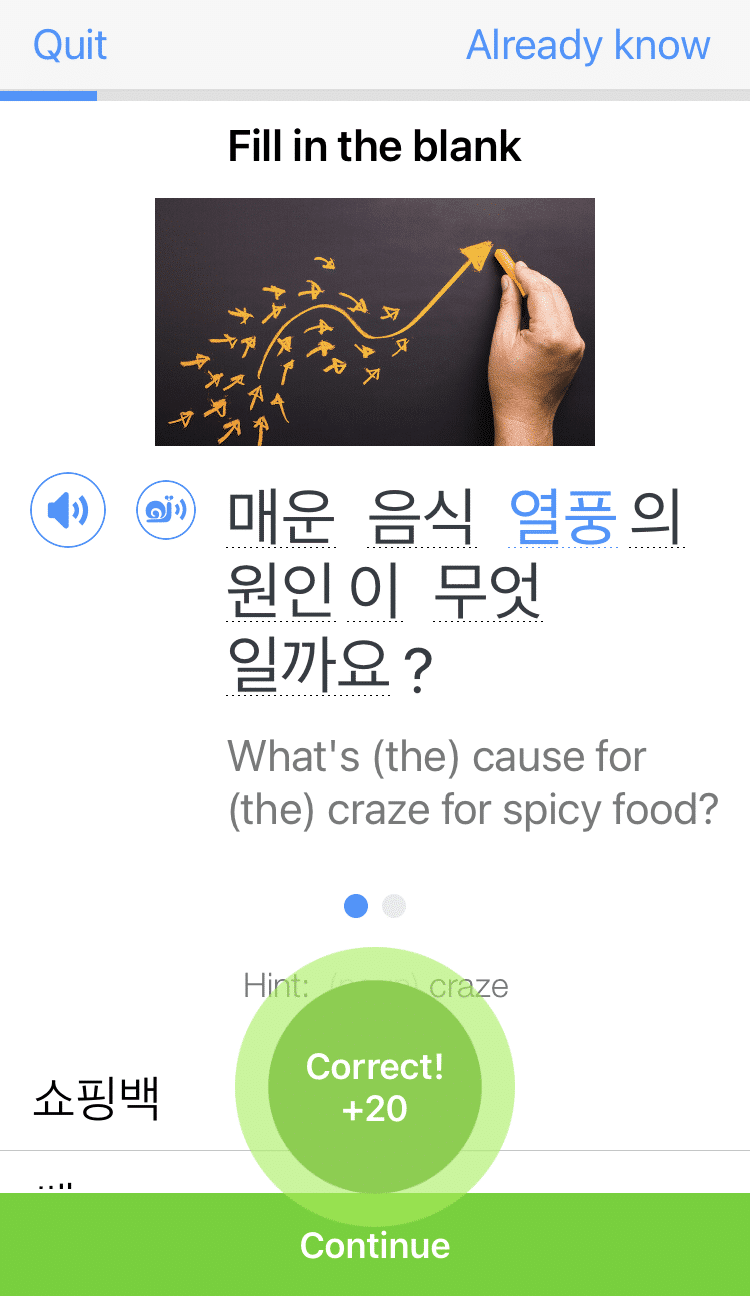
FluentU keeps track of what you're learning, and tells you exactly when it's time for review, giving you a 100% personalized experience.
Review sessions use video context to help embed the words in your memory.
Start using the FluentU website on your computer or tablet or, better yet, download the FluentU app from the iTunes or Google Play store. Click here to take advantage of our current sale! (Expires at the end of this month.)








